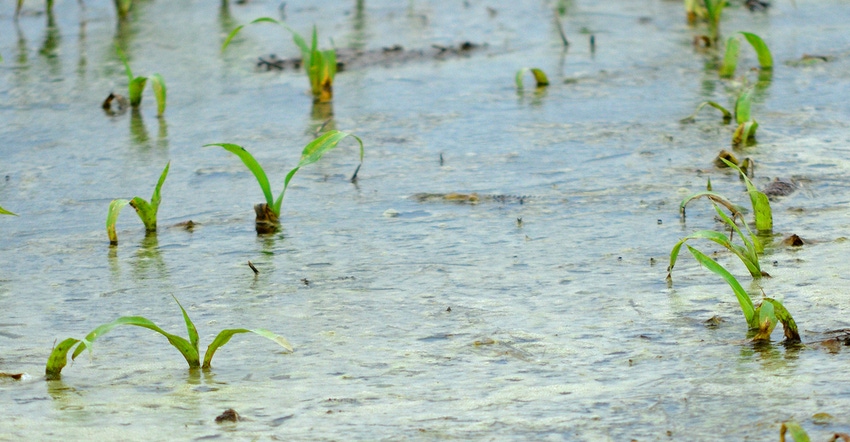
The unprecedented rains and flooding in May created a mess in many Missouri farm fields. Farmers are now evaluating how the crops beneath the flooded and saturated fields are holding up.
In a recent Integrated Pest Management article, Greg Luce, University of Missouri Extension grains specialist and research director for the Missouri Soybean Association, says that three factors determine how well a seedling can tolerate flooding:
• duration of the flooding
• temperature during the flood
• rate of drying and conditions just after the flooding event
Time underwater
In the case of corn, Luce points out that young corn plants can survive flooded conditions for two days with temperatures above 70 degrees F, or four days with temperatures below the mid-60s. According to Luce, corn plants that survive should show leaf growth within three to five days after the water recedes.
For soybeans, plants can tolerate 48 hours underwater. However, Luce notes that flooding for four days or more reduces stand, vigor and yield. Soggy soils also restrict root development, and may make them more susceptible to drought stress later in the growing season.
Weather predicts survivability
Like any other time in Missouri, temperatures swung in both directions during the May flood event.
Cool temperatures early on favored crop survival. Luce says that cloudy conditions decreased solar radiation and kept soils and floodwaters cooler. This helped slow down the metabolic process of the plants. Still, there is a downside to the cold, wet conditions.
In the short term, plants are slow to recover once the water recedes. In the long term, diseases often set in. Luce says that if cool, wet conditions last longer than two to three weeks, both corn and soybean stands are at risk of pythium and phytophthora in soybeans. In the case of phytophthora, the disease may start infections in the seedlings that will later kill the soybean crop.
On the flip side, warmer conditions can reduce crop survival by 50% or more, he notes.
Farmers will need to remain diligent at scouting those fields saturated or flooded for disease issues this summer.
About the Author(s)
You May Also Like






